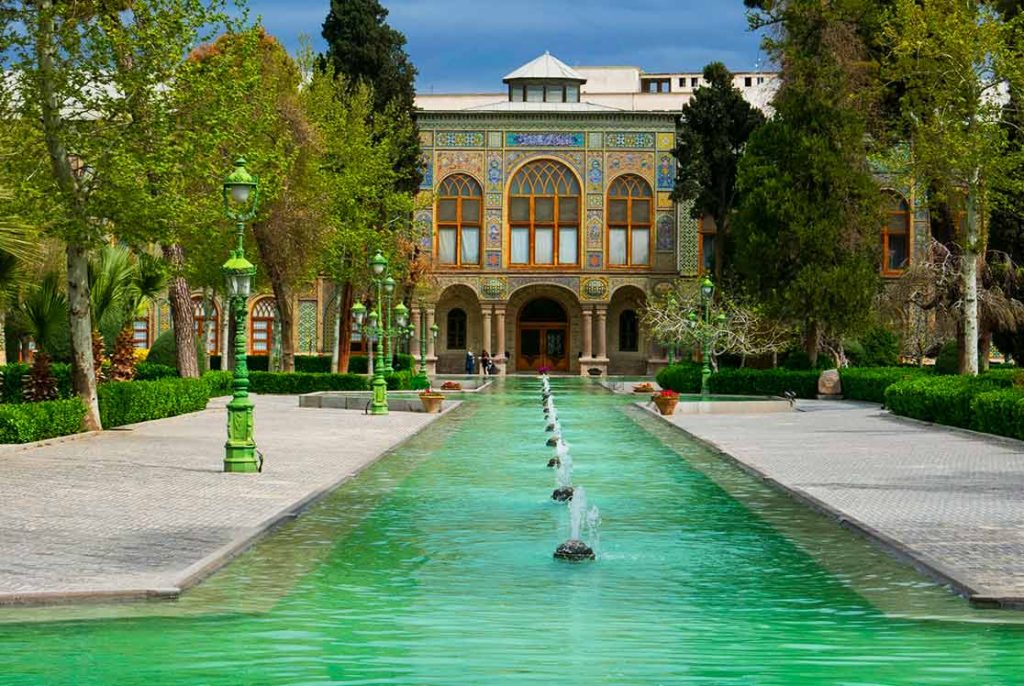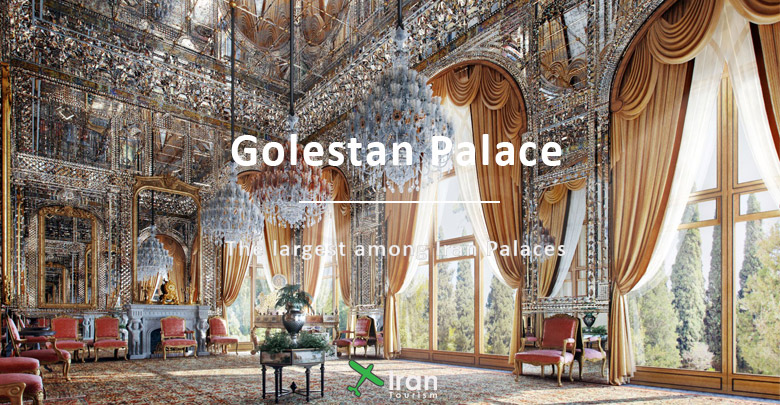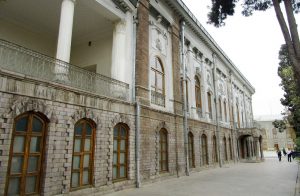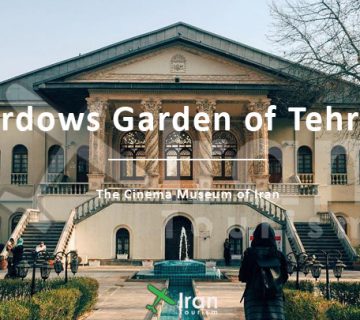Golestan Palace (کاخ گلستان, Kākh-e Golestān) is the largest among Iran’s palaces and one of the main Tehran tourist attractions. With more than 200 years of age, it can clearly show Iran during the Qajar dynasty’s rule. Follow this article to learn about one of the greatest Tehran tourist attractions.
Golestan Palace Overlook
Accessibility
Golestan Palace is located in the “old Tehran” district. This district of Tehran city is rich with cultural and historical sites such as museums, old houses, and of course, Tehran’s grand bazaar.
To get to the Palace, you can either get Line 1 of the Tehran metro and drop out at the 15-Khordad station or get the electrical mini rides from Imam-Khomeini Square and drop out in front of the Palace.
Open Days and Hours
Golestan Palace, the largest of Iran’s palaces, is open seven days a week from 9 A.M to 4 P.M. But it’s better to attend it on the weekdays rather than Thursdays and Fridays because it’ll be less crowded.
Entrance Fee
Golestan Palace consists of 12 buildings in total. Each of them requires an entrance fee. So it’s better to know which buildings you want to visit in advance. You must pay the main entrance fee of 1,000,000 RLS regardless of appearance. Of those 12 buildings, 11 require a 500,000 RLS ticket, and the main Hall alone has a 2,00,000 RLS entrance fee.

Tehran tourist attractions, Golestan Palace
Website: golestanpalace.ir
Phone number: (+98) 21-33113335-8
A Brief Summary of Golestan Palace Complex
As we said, Golestan Palace is more than 200 years old and is one of the largest Iranian palaces. Visiting these Tehran tourist attractions could give you a better sight of the Qajar period and the Zandi period’s architecture, lifestyle, clothing design, etc.
Marble (called marmar in Persian) Throne Hall
This Hall is the oldest part of the Golestan Palace. This is where the king would sit on special occasions and address the commoners. The marble throne was built at the hands of a craftsman from Esfahan by the orders of Fath Ali Shah (the second Shah of Iran in the Qajar era)
The Gallery
The Gallery of Largest Iran Palaces presents paintings from the early years of the Qajar dynasty to the more recent ones of the Pahlavi dynasty; Painters such as Kamal-ol-Molk, Malek Shoara, Mohammad Qafari Kashani, and so on.
Makhsus building (موزه مخصوص, Mākhsus Building)
They were dedicated to showing the gifts bestowed to the Qajar Kings from foreign kings or Merchants. These artifacts were the personal belongings of kings during that era.
The Main Hall
The very heart of the Golestan Palace. This Hall is designed, dressed, and painted elegantly and delicately from ceiling to floor. It is most certainly one of the best Tehran tourist attractions.
The Mirrors hall
This Hall was designed to Wow every spectator who walks into this room.
The Containers hall
This Hall will show you various dishes with unique designs and shapes from west to east and south to north.
And last but not least, the Salam Hall (reception Hall) will make you hold your breath when you walk inside it.
If you visit only one building in the Golestan Palace, The Main Hall must be your choice. To enter this building, wear disposable shoe covers provided at the door. Taking any photo is highly prohibited in this building.
Howz Khaneh (Pond House)
This is where the paintings of European painters are kept, mostly souvenirs from the Europe travel of the Royal Family or gifts from European Kings.

The Throne in the Reception Hall of Golestan
Shams-ol-Emareh
This is the tallest building in the Golestan Palace complex. The idea of building it first hit Naser-oldin Shah after returning from his first European tour and visiting all the tall buildings there. This unique building is one of those Tehran tourist attractions which are well preserved.
The wind catcher building
This building was constructed to direct the wind on hot summer days into the building and help cool down the temperature. The central room manifests some of the Palace’s best window colors and designs.
Photo Gallery
The basement of the wind catcher building is a gallery of photos from Tehran during the Qajar dynasty period.
 The Abyz Palace (کاخ ابیض, Kākh-e Abyze)
The Abyz Palace (کاخ ابیض, Kākh-e Abyze)
This building is believed to have been designed by Naser-oldin Shah to house all the precious gifts the Ottoman Sultans had sent him. This building is a peerless building among Iran palaces.
More info about Golestan Palace
Classic restaurants, cafes, and restrooms are by the wind catcher building in the southeastern part of the Palace.
Also, being one of the largest Iran palaces has brought privileges to the place. Hence, art galleries, live shows, and music performers are occasionally available in Golestan Palace’s main yard. So if you are lucky, you might see Iranian modern pop culture.


 The Abyz Palace (کاخ ابیض, Kākh-e Abyze)
The Abyz Palace (کاخ ابیض, Kākh-e Abyze)

No comment